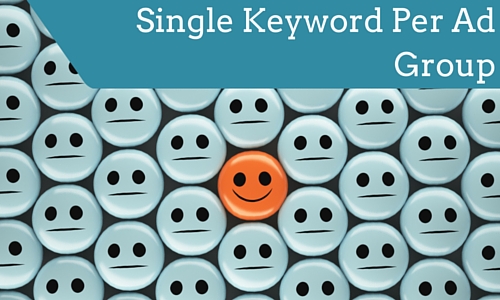[Update as on 28th April, 2020: This post has been updated with some new links]
Keywords are the most important component of a PPC campaign. Through proper keyword mapping with your ad and your landing page content you can achieve the desired campaign objectives. You might have often clubbed similar keyword sets under one ad group hoping it would serve the purpose. The one catch with this approach is that not all keywords exactly match with the ad that gets triggered.

Let us explain that with an example. For example an ad created for ‘Car Seat Cover’ might have bidded keywords such as ‘infant car seat cover’, ‘leather car seat cover’ etc. However the ad would not serve the ‘specific’ purpose of the searched term. In such cases it is feasible and a better decision to opt for Single Keyword Ad Group Keywords.
What exactly are these ‘Single Keyword Ad Group Keywords’?
SKAG or Single Keyword Ad Group Keywords are those to-the-point ‘single’ keywords that controls the exact matching of keyword with the text ad. In the above example, an ad group with keyword ‘Leather Car Seat Cover’ would have the keyword mentioned in the following ways:
- The heading of the ad
- The domain link
- The destination landing page for the ad
How to use SKAG?
You can add the keywords in match types such as, BMM, phrase and exact match. Broad match is left out because it has the tendency to even match with vaguely related terms, where using the other match types will ensure to capture a relevant variant of your SKAG. Not to forget the ad copy to drive focus on the benefits of the product and a final call to action to induce interest. All these ingredients make up to a successful execution of ad and keyword matching. Further, it makes conversion rate fair better than the previous cluttered arrangement of keywords.
How would it benefit you?
Having understood what SKAG’s are and how it could be implemented, here are some reasons to further push you towards adopting this approach.
1. As mobile bid modifier is available only for ad group you will be able to control mobile bids for each keywords
Lets take an example. An ad group has two keywords “car seat cover” with Mobile CPA of $30 and “leather car seat cover” with mobile CPA of $70. Adding these keywords in separate ad group helps you adjust the mobile bid. Hence, each keyword will be able to deliver at the mobile bid that best drives results and doesn’t undermine the efforts of each other.
2. You can use DKI confidently without worrying about ad being irrelevant to other keywords in the ad group
Now Dynamic Keyword Insertions are a great way to optimize your ad messaging vis-a-vis the search query. However, ad groups with multiple keywords might not match the ad messaging when DKIs are incorporated.
For instance, if the keyword is ‘chocolate cake’ and the ad messaging says ‘handmade chocolate candies’, then the keyword being inserted (at headline, description or URL) might offer a disconnect. This issue gets controlled if SKAG is used .
3. Using SKAG can ensure that the search keyword’s intent is met by your ad message
Losing out on a prospect customer is what no marketer would wish to opt for. Hence, it is all the more important to connect the dots, from the searched query to the ad messaging and finally to the landing page intent.
For a search query such as ‘car insurance’ you would not want to show an ad messaging with ‘auto insurance’. It is advisable to bid for those keywords only that best meet the campaign and business objective.
4. It increases the chances of improving your quality score, which can in turn affect your cost per click
A good QS also has an impact on how much you will pay when a user clicks on your ad. SKAG helps tailor your ads for a very targeted keyword. This offers an exact match of the searched query with your keyword and ad messaging, hence giving your QS a booster and pushing your CPC down.
5. Don’t need negative keywords for that ad group, unless there is a close variant you want to exclude from triggering your ad
There are less chances of your ads getting clicks for any irrelevant keyword. Unless there is a requirement to block a close variant of the bidded keyword, your effort to manually add the negative keywords to your ad group is reduced.
6. You benefit from highly relevant sitelink extensions
With sitelinks available at ad group level, your SKAGs benefit by optimizing the ad by showing relevant sitelink extensions. So, instead of displaying all top landing pages, you can show relevant sitelinks that best meets the search query objective.
If you want to get going with this concept, it is advisable to not disrupt your current campaign settings. Try with running a test or an experiment on the SKAG and multi-keyword ad groups. Draw comparison of CTR, quality score and conversion and deduce who’s ROI is more than the other.
Also, keep a close check on what terms are triggering your ad. You can take the help of the Search Terms Report to identify the relevant terms (you could think about adding them in a separate SKAG) or irrelevant terms (add them as negatives).
Note: – If you are creating a new SKAG, for a term identified from an existing SKAG, then don’t forget to add them as negative keyword in the existing SKAG. This will ensure that both the SKAGs don’t overlap with each other.
Here is an interesting post by Johnathan Dane that you could check out.
We would love to hear your experience of using SKAG vs multi-keyword per ad groups.
Related Articles:






Simon
If you are using a single keyword in the adgroup what is the point of using DKI at all? The messaging will always be the same within that adgroup as there is a single keyword, so it will never act in a dynamic fashion.
Shashikant
Simon, you are right. The DKI is useful when you are not able to fit in the entire keyword in headline due to length restriction. Let’s say, the keyword is [unsecured personal loans]. The headline can be “Apply for {KeyWord:Personal Loans}.” This headline can appear as “Apply for Unsecured Personal Loans,” which is longer than the standard 25-character limit.
Hopefully, with 2 headlines in Expanded Text Ads, this problem will be less severe. Advertisers will be able to fit in the right message using both the headlines. BTW, did you check out our preview tool for Expanded Text Ads? https://www.karooya.com/expanded-text-ad-preview-tool